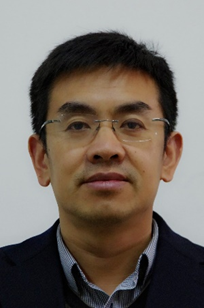Construction of the Coexistence
System of Polymer Dispersed and Stabilized Liquid Crystal
Huai Yang*,Yanzi Gao,Cheng Zou, Meina Yu
Peking
University
ABSTRACT: In order to meet the development of LCD devices towards light
weight, low price, especially flexible thin film, and people's demand for
multi-functional intelligent response film, liquid crystal/polymer composite
film has become a research hotspot in the field of display and intelligent
materials. This kind of film is expected to have both stimuli response and
continuous production of large area flexible thin film products by roll to roll
processing technology. At present, there are two main systems: polymer
dispersed liquid crystal (PDLC) and polymer stabilized liquid crystal (PSLC).
In general, PDLC films are prepared from
a mixture of liquid crystalline/non-liquid crystalline photopolymerized
monomers (NLCM) sandwiched in two transparent ITO conductive plastic films by
UV curing of NLCM, in which the liquid crystals are dispersed in the polymer
matrix in the form of droplets. When the electric field is not applied, the
liquid crystal molecules are randomly distributed in the polymer matrix
interface, and the PDLC film is in a strong light scattering state; after the
electric field is applied, the long axis of the liquid crystal molecules is
parallel to the direction of the electric field, and the PDLC film is
transparent. The polymer matrix content of practical PDLC film is generally
between 40~70 wt%, and the peel strength between two layers of ITO film is
high, so it could be prepared into large area film by roll to roll processing.
It has been widely used in the fields of building and automobile doors and
windows, glass curtain wall, large projection screen and touch screen. However,
due to the high content of polymer matrix, the anchoring effect of its interface
on the liquid crystal molecules is strong, and the driving voltage of PDLC film
is high, and its saturation voltage is generally above 60 V. Therefore, the
current PDLC membrane has high energy consumption, poor security, and is
difficult to be used in the display field.
PSLC film is a liquid crystal/polymer
network composite system formed by liquid crystal/liquid crystal
photopolymerization monomer (LCM) mixture after the formation of specific
molecular orientation. The polymer network has a stable effect on the initial
orientation of liquid crystal molecules. PSLC film has the characteristics of
low driving voltage and fast response speed, but the polymer network content in
the system is generally low, usually about 3~5 wt%, otherwise the liquid crystal
molecules will be strongly bound by the polymer network and difficult to drive.
Therefore, the peeling strength between the two substrates is very low, so it
is difficult to carry out large-area flexible processing, so it can only be
used in glass substrate.
Based on the difference of reaction rate
between non-liquid crystalline and liquid crystalline monomers in liquid
crystal, a coexisting system of a polymer dispersed and a stabilized liquid
crystal (PD&SLC) systems with both PDLC and PSLC microstructures was
constructed by a second photopolymerization method of first polymerizing the
non-liquid crystalline monomers and then the liquid crystalline monomers. Based
on the high throughput computation, the photopolymerization monomer which could
significantly reduce the driving voltage of the coexisting system could be
selected, which could significantly improve the electro-optical properties of
the coexisting system, and lay a foundation for the development of novel light
transmittance adjustable thin films and liquid crystal display devices.
Keywords: Liquid crystal; Polymer; Coexisting systems
* Corresponding author:
yanghuai@pku.edu.cn

Yang Huai is a bachelor and master of Jilin University and a doctor of Kyushu University. He is tenured professor, doctoral director, Yangtze River scholar, recipients of National Fund for Outstanding Youth, member of the Royal Society of Chemistry, chief scientist of National Key R&D Program, and head of innovation research group of NSFC. His research interests are molecular design and preparation of liquid crystal display materials, smart films based on liquid crystal / polymer composites and construction of new liquid crystal display devices. He has published more than 290 SCI academic papers, applied for more than 130 national patents (including more than 70 authorized patents); won the first prize for technological invention of the Ministry of Education in 2014 (the first prize winner), the first prize of natural science of the Ministry of Education in 2016 (the first prize winner), and the second prize of National Technological Invention Award (the first prize winner) in 2015.